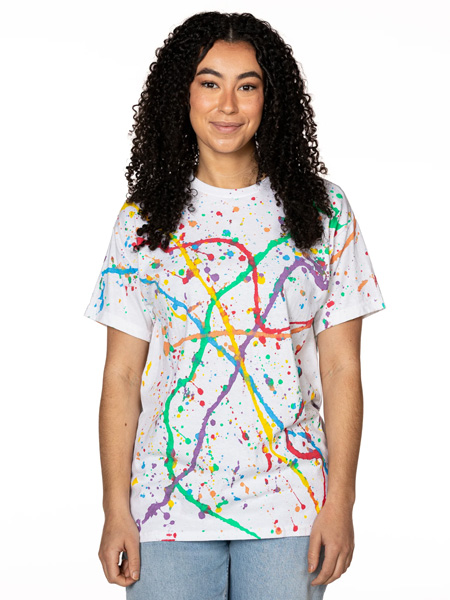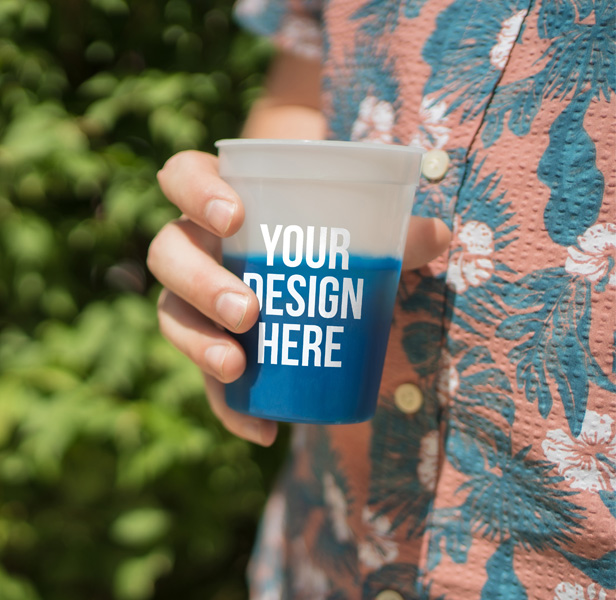Product Hub August 14, 2023
What Happened to the ’90s Hypercolor Trend?
Though the look never made a full comeback, its legacy lives on through promo products like drinkware.
The ’90s were a funky decade filled with Beanie Babies, scrunchies, chokers and Hypercolor T-shirts. Decades later, most of these trends have found their way back into the mainstream … except for one. What happened to Hypercolor?
A heat-sensitive fabric that changed color, especially when it was touched, Hypercolor hit it big in 1991. The technology of Hypercolor included a double-dying process where the fabric was given an additional treatment in a thermochromic dye. This makes the color of the fabric change when heated up or cooled down.
Okay...who had a hypercolor shirt in the 90's?! pic.twitter.com/m0dXjHNxB4
— 🌉 •»» 🌹 Rose 🥀 ««• 🌉 (@rositabella415) June 29, 2018
Generra, the company that invented the technique, flooded the market with Hypercolor tees, shorts, sweatshirts and pants. The trend quickly hit mass popularity but died out nearly as quickly, due in part to the fact that the unique color-changing properties petered out after a few washes. (Generra filed for bankruptcy in 1992.) In fact, the fabric changed colors when it reached about 100-102 degrees Fahrenheit, staining parts of the fabric where the wearer is most hot and sweaty. “I guess folks didn’t want them because when the color changed, it changed in places where you don’t it want to change,” remarks Nathan Brown, owner and founder of Dyenomite Apparel (asi/51185).
The Hypercolor technology didn’t completely die out. Though not listed on its site or catalog, Dyenomite had been selling the color-changing shirts to buyers who requested it. “We sold a decent number of them back from 2016 through 2020,” says Brown. “When the pandemic hit, it was hard to get the material. We discontinued the line, but I’ve had several customers reach out to me in the last few months to start it back up again.” Streetwear and concert merch proved popular destinations for the look, adds Brown.
Other dye techniques from the ’90s that have been re-popularized include splatter dye. “[Hypercolor] was very popular in the late ’80s, early ’90s, along with some splatter dye techniques and neon colors,” says Brown. “We have several different splatter dye type options that we’re offering right now.”
Other 1990s-era dye trends are seeing renewed popularity, including splatter dye. Dyenomite Apparel (asi/51185) offers six different splatter dye treatments (200SLA) on 100% cotton shirts.
Even though Hypercolor hasn’t reached the popularity it had in the early ’90s, its legacy lives on in other color-changing promo products – including drinkware. Cups and mugs are designed with the same type of chemistry, changing the color when a hot or cold liquid is poured into the cup.
“I think the main draw of an item like that is that it’s interactive,” says Alyssa Mertes, lead copywriter for Top 40 distributor Quality Logo Products (asi/302967). “It’s something that you can experience. It’s tactile, you can touch it, you can interact with it, you can play with it. That’s why it’s a best seller for kids at places like community fairs or schools.”
Mertes points out there’s a wide range of products to integrate this trend into a client’s marketing program, from mugs and pencils to stress balls and even rubber ducks.
Quality Logo Products sells a number of color-changing products, including this 12-oz. Made-in-the-USA stadium cup from Aakron Line (asi/30270) that changes with cold liquids.
Mertes adds: “Because you already have the appeal of the item changing colors, you don’t really need to go overboard with your design. So, the one-color screen-printed input is perfect.”
While color-changing products are typically bright, Brown suggests overall color trends are shifting toward nude and neutral colors. “The bright colors are still very popular,” he notes. “We do tie dyes and everything like that. But they’re not as popular as they were maybe three or four years ago. We’re getting more into the neutral tones.” The company’s new National Parks collection has colors inspired by its namesake, including greens, sages and mauves.
Mertes offers a reminder that even as one trend makes way for another, there’s always a place for fun and successful promos. “These trends kind of ebb and flow,” she says. “The thing with color-changing items is that there’s always a way to use them, and always a way to creatively implement them into your campaigns no matter what you’re doing. I think that’s the key takeaway from this. Let’s say tomorrow nobody’s talking about this trend anymore. It doesn’t mean that those products are null and void. You can still find a creative way to use them.”

Product Hub
Find the latest in quality products, must-know trends and fresh ideas for upcoming end-buyer campaigns.


